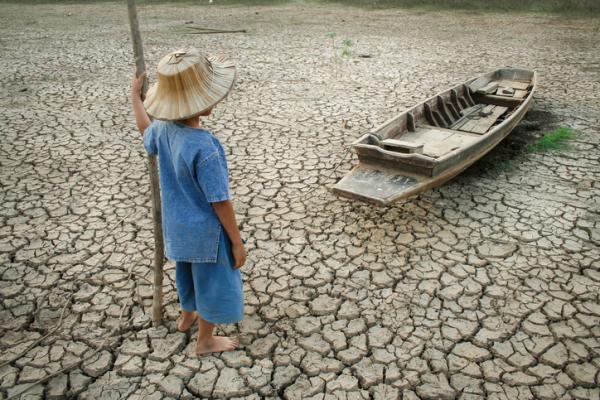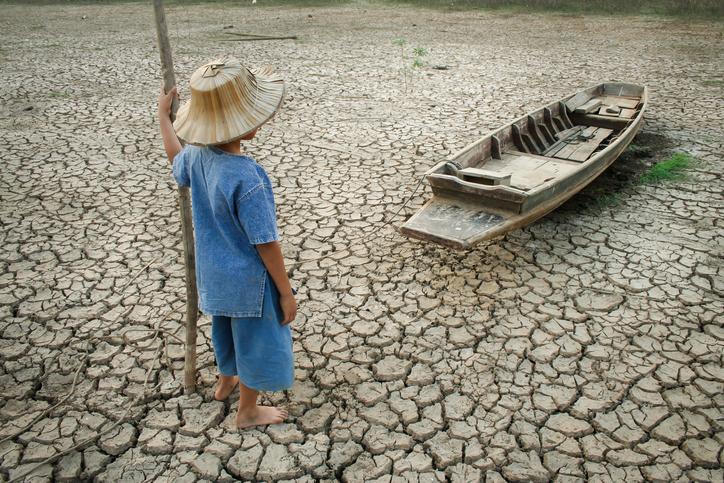What Is the Troposphere? - Characteristics, Importance


The troposphere is the lowest layer of Earth's atmosphere and is also the most important layer of the atmosphere for life on Earth. It contains the air we breathe and the water vapor that forms clouds and precipitation. The troposphere also plays a vital role in regulating the planet's climate. However, human activities are disrupting the delicate balance of the troposphere. This warming is leading to more extreme weather events, rising sea levels, and changes in precipitation patterns.
In this article by thedailyECO, we will explore what the troposphere is, its main characteristics and importance, and we will discuss how climate change is impacting this crucial layer of the atmosphere.
What is the troposphere?
The troposphere is the closest atmospheric layer to Earth, stretching from the planet's surface to an elevation of about 10 kilometers (6 miles).
This crucial layer encompasses roughly 75% of the Earth's atmosphere, holding nearly all of its precious water vapor. It is also the primary stage for all of our weather phenomena.
The troposphere is in constant motion, with prevailing winds that flow from west to east and from the poles toward the equator. This dynamic layer boasts a wide array of cloud types, formed when airborne water vapor condenses into liquid droplets or ice crystals.
The troposphere is indispensable to life on Earth. It furnishes the very air we breathe and the essential water resources we rely upon. Moreover, it serves as a protective shield, safeguarding us from the sun's harmful radiation.
Learn more about the mesosphere, the third layer of Earth's atmosphere, by reading our other article.
Characteristics of the troposphere
The troposphere possesses several essential characteristics that shape its role in our planet's climate and ecosystems. To delve deeper into this crucial atmospheric layer, let's explore its composition, temperature profile, and pressure dynamics.
Composition
The troposphere's composition is both complex and vital for life on Earth. It is primarily composed of nitrogen (78%), oxygen (21%), and argon (1%), along with trace amounts of water vapor and carbon dioxide, among other gases. Notably, the troposphere boasts the highest concentration of oxygen and water vapor compared to other atmospheric layers.
This composition endows the troposphere with a greenhouse effect, as it retains heat and moderates temperature variations between day and night, thereby fostering the conditions necessary for life. Unfortunately, human activities, notably since the Industrial Revolution, have led to increased gas concentrations in the troposphere, resulting in an exacerbated greenhouse effect and accelerated global warming.
Temperature
The temperature within the troposphere mirrors the ambient temperature at Earth's surface. However, this layer exhibits a characteristic temperature decline with increasing altitude.
On average, the temperature decreases by roughly 6.5 degrees Celsius (11.7 degrees Fahrenheit) per kilometer (0.62 miles) of ascent, culminating in temperatures of approximately -55 degrees Celsius (-67 degrees Fahrenheit) at the tropopause or exobase, marking its upper boundary.
Pressure
Pressure within the troposphere, like temperature, diminishes with altitude. In fact, the pressure differential is substantial, with the pressure at the tropopause being roughly 4.5 times lower than the pressure near Earth's surface within the troposphere.
This fluctuation in atmospheric pressure plays a pivotal role in influencing various meteorological phenomena, such as wind patterns and storm formation. Not only that, but meteorologists use pressure readings to assess weather patterns and forecast changes.
Learn more about the magnetosphere, Earth's invisible shield, which protects us from harmful radiation

Importance of the troposphere
The troposphere plays a vital role in sustaining life on our planet. It provides the air we breathe, regulates the climate, generates weather patterns, and protects us from harmful radiation.
Here are some key aspects of the troposphere's significance:
- The troposphere contains the essential gases we need to breathe, including oxygen and nitrogen. Without this layer, life on Earth would not be possible.
- The troposphere is where the water cycle takes place. Water vapor evaporates from the Earth's surface, rises into the troposphere, and condenses into clouds. Clouds then produce precipitation, which nourishes plants and replenishes freshwater supplies.
- The troposphere is where most weather phenomena occur, such as rain, snow, storms, and wind. Its constant motion and interactions between air masses lead to the creation of weather systems that impact our daily lives.
- The troposphere plays a vital role in regulating the Earth's temperature. It traps heat through the greenhouse effect, keeping the planet warm enough to sustain life. However, human activities, such as the release of greenhouse gases, can disrupt this balance, leading to global climate change.
- The troposphere absorbs and scatters harmful ultraviolet (UV) rays from the sun, preventing them from reaching the Earth's surface in excessive amounts. This protection is essential for preventing skin damage and the development of conditions like skin cancer.
As you have seen, air is essential for life on Earth. Learn more about the importance of air in our other article.
Troposphere and climate change
As we have seen, the troposphere plays a vital role in regulating the planet's climate. It is where most weather phenomena occur, and it contains the majority of the Earth's water vapor and greenhouse gases.
Climate change is caused by the release of greenhouse gases into the atmosphere, which trap heat and warm the planet. The troposphere is particularly sensitive to climate change, as it is where the majority of greenhouse gases are located.
One of the main ways that climate change is affecting the troposphere is by causing it to warm. The average temperature of the troposphere has increased by about 1 degree Celsius (1.8 degrees Fahrenheit) since the pre-industrial era.
This warming is causing a number of changes in the troposphere, including:
- More extreme weather events, such as heat waves, droughts, floods, and storms.
- Rising sea levels, due to the melting of glaciers and ice sheets.
- Changes in precipitation patterns, leading to more droughts and floods in some regions.
- More frequent and intense wildfires.
Climate change is also impacting the composition of the troposphere. For example, levels of carbon dioxide, a major greenhouse gas, have increased by about 40% since the pre-industrial era. This increase in carbon dioxide is causing the troposphere to become more acidic, which can have negative impacts on ecosystems and human health.
The impacts of climate change on the troposphere are already being felt around the world. However, these impacts are expected to become more severe in the future if greenhouse gas emissions are not reduced.
For a clear explanation of the difference between climate and weather, read our article.

If you want to read similar articles to What Is the Troposphere? - Characteristics, Importance, we recommend you visit our Facts about Earth and the universe category.







